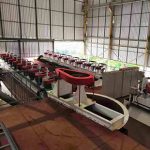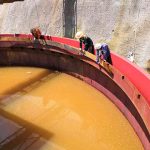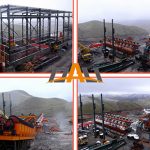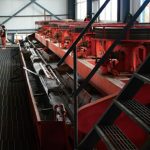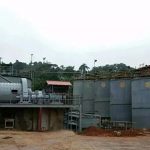Surface vs Subsurface Mining: A Comparative Guide
Overview of Mining Methods
Defining Surface Mining and Subsurface Mining
Mining is a big deal for industries. It’s how we get stuff like coal, gold, or copper out of the ground. There are two main ways to do it: surface mining and subsurface mining, which some folks call underground mining. Surface mining is all about clearing away dirt and rocks to grab minerals sitting close to the top. It’s great for shallow deposits.
Subsurface mining, though, means digging deep tunnels or shafts to reach valuable stuff buried way down, like diamonds or rare metals.
Key Processes Involved in Each Method
Surface mining uses tricks like open-pit mining or strip mining. Big machines scoop up huge chunks of earth to uncover minerals near the surface. It’s a lot of heavy lifting with bulldozers and trucks.
Subsurface mining has its own methods, like drift mining, shaft mining, or slope mining. Miners carve out tunnels or shafts to get to deep minerals. They haul the goods up to the surface through these underground paths. It’s the go-to way when resources are tucked far below ground.
The Difference Between Open Cast Mining and Underground Mining
Geological Conditions and Site Selection
Open cast mining, or open-pit mining, works best when minerals are near the surface and spread out over a big area. Think flat land or gentle hills. Underground mining is the pick when deposits are deep down or in tricky, mountainous spots.
One of the top advantages of underground mining is getting to minerals too deep for surface methods. It’s perfect for high-value stuff like gold or rare earth elements hidden far below.
Equipment and Machinery Used in Each Method
Surface mining leans on big gear like excavators, bulldozers, and giant trucks to move tons of dirt. Underground mining needs tools made for tight, tough spots, like narrow tunnels.
At Qixia Dali Mining Machinery Co., Ltd, we’ve got subsurface mining equipment for these rough conditions:
The DALI WJ-1 Load Haul Dump (LHD) is small but mighty, perfect for narrow tunnels with strong pulling power.
The DALI UK-20 Underground Dumper holds a 20-ton load and comes with safety stuff like SAHR brakes and rear-view cameras.
Underground Personnel Carrier, the exhaust gas purification device is Canadian ECS platinum catalytic purifier with muffler, which greatly reduces the air and noise pollution in the working tunnel.
These machines are designed to handle different underground setups while keeping workers out of harm’s way.
Environmental Impact and Land Disturbance
Surface mining tears up big patches of land. It can wipe out trees, cause erosion, and leave the landscape looking rough. Underground mining, on the other hand, doesn’t mess up the surface as much. It cuts down on tree loss and blends into the scenery better. But it’s not perfect—it can lead to problems like the ground sinking or water getting dirty underground.
Operational Efficiency and Cost Comparison
Capital Investment and Operating Costs
Surface mining is usually cheaper to start. It needs basic setups and common machines, so costs stay lower. Underground mining, though, asks for fancy tools, high-tech gear, and workers who know their stuff. That makes it pricier upfront.
Even with the bigger price tag, underground mining can be worth it. It goes after high-quality ores and deals with fewer environmental rules, which can save money in the long run.
Production Rates and Resource Recovery
Surface mines churn out minerals fast. They’re easy to get to, so big machines can move loads of material quickly. Underground mining is slower but more careful. It zeroes in on high-grade ores with less junk mixed in, which means more profit for each ton pulled out.
Long-Term Economic Considerations
Surface mines bring in cash quick because they’re fast to set up and pump out lots of material. But underground mines often stick around longer. They don’t get as much flak from environmental groups, so they’re a solid bet for projects that need to last.
Safety Considerations in Surface and Underground Mining
Common Hazards in Each Mining Method
Surface miners face risks like landslides or getting hit by machines. Underground miners deal with scarier stuff, like tunnels caving in or collapsing. Plus, toxic gases like methane can be a real danger down there.
The International Labour Organization (ILO) says underground mining is one of the riskiest jobs out there, with high death rates.
Role of Underground Mining Safety Equipment in Risk Reduction
Good underground mining safety equipment makes a huge difference. For example:
The DALI UK-40 Underground Truck has SAHR braking systems and alerts that warn about oil temperature or pressure problems.
The DALI WJ-2 Scooptram uses catalytic purifiers to clean up tunnel air.
All our machines can add fire suppression systems to be ready for emergencies.
These features help keep underground dangers in check, making the job safer.
Worker Training and Emergency Preparedness Measures
Miners need solid training. They learn how to manage air flow, spot dangerous gases, practice evacuation drills, and handle equipment right. Our machines have built-in emergency systems to back up safe work. Regular drills and proper gear keep workers ready for anything.
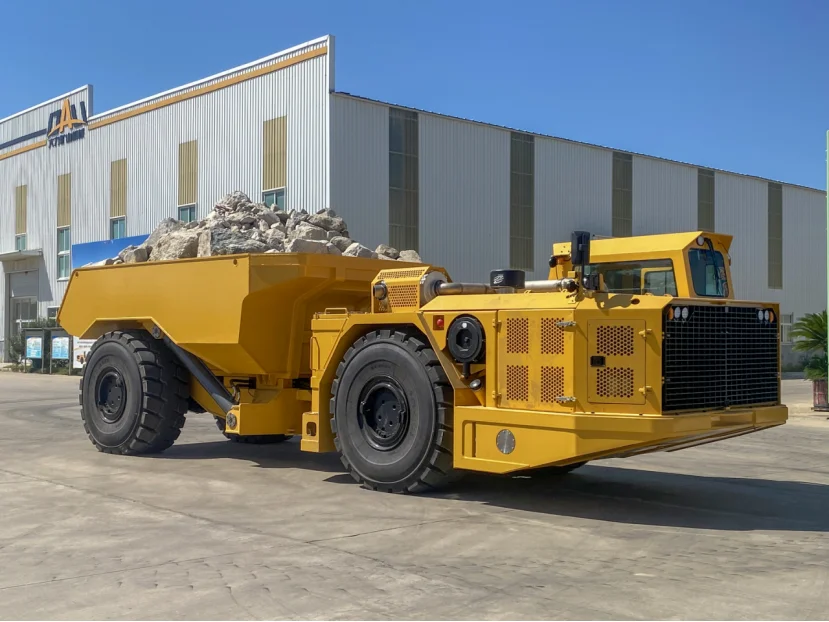
Advantages of Underground Mining Over Surface Techniques
Reduced Surface Disruption and Visual Impact
Underground mines stay hidden. Unlike surface mines that leave giant holes, they don’t mess up the view. This makes them better near towns or protected nature areas, where big scars on the land would cause trouble.
Access to Deep Ore Bodies with Higher Grade Materials
Some of the richest deposits—like gold, silver, or platinum—are buried deep. Underground mining gets to these treasures when surface methods can’t, either because it’s too costly or just not doable.
Enhanced Worker Protection Through Advanced Safety Systems
Modern LHDs, like our WJ-6, come with enclosed cabins that have air conditioning. They also have monitors to check hydraulic pressure, oil levels, or electrical issues in real time. These setups make underground work safer and less stressful for miners.
Equipment Solutions from Qixia Dali for Subsurface Operations
Specialized Underground Mining Safety Equipment Provided by Qixia Dali
Our gear is made for tough underground jobs:
WJ-1 LHD – Great for tight spots with an easy-to-use canopy.
UK-30 Dumper – A 30-ton truck with a ROPS/FOPS-certified cabin.
WJ-6 LHD – Built for big mines, with safety first.
Each machine has stuff like SAHR brakes, alarms to catch problems early, and rear-view cameras to help see in tunnels. These are key parts of our underground mining safety equipment.
Customizable Machinery for Varying Geological Conditions
At Qixia Dali Mining Machinery Co., Ltd, we tweak our machines to fit your mine. Whether you’re in high mountains or tight seams, we adjust things like bucket sizes or engines to match your needs.
Installation, Maintenance, and Technical Support Services
We’ve got your back from start to finish.Plus, we help set up your gear, keep it running with maintenance and spare parts, and train your team on-site. Our goal is to keep your mine humming along safely and smoothly.
Choosing the Right Method for Your Project
Factors Influencing the Choice Between Surface vs Subsurface Methods
You’ve got to think about a few things:
How deep the ore is and how spread out.
What the local environmental rules say.
If the mine is near people or towns.
How much money you can spend.
What you want the project to achieve long-term.
These factors depend on where you’re working and what you’re aiming for, so getting expert advice is a must.
How Qixia Dali Supports Decision-Making Through Engineering Expertise
We team up with you from the start. We do studies on your land and suggest machines that fit your project’s size and needs. Our experts use hard data to help you pick the best mining method, so you’re set up for success.
FAQs About Surface vs Subsurface Mining Methods
What is the main difference between surface and subsurface mining?
Surface mining scrapes off top layers of dirt or rock to get minerals near the ground. Subsurface mining, or underground mining, digs tunnels and shafts to reach deep deposits.
Why choose underground over open-pit methods?
Underground mining gets to deeper ores and causes less harm to the surface. It’s great when you’ve got strict land rules or minerals buried far down.
What types of equipment are used in underground mines?
You’ll see Load Haul Dumps (LHDs) like the WJ-1, dump trucks like the UK-20, plus ventilation systems and drilling rigs. They’re built for tight tunnels and packed with safety features like alarms and SAHR brakes.
How does underground equipment ensure worker safety?
Our machines have enclosed cabs (ROPS/FOPS certified), rear cameras for seeing in tunnels, and fire suppression options. These are part of the underground mining safety equipment we offer at Qixia Dali Mining Machinery Co., Ltd.
Can I customize equipment based on my site’s needs?
You bet! We customize all our models, tweaking things like bucket sizes or engines to fit your mine’s altitude or geology. Our support comes from a 130,000 m² facility in Yantai City, with over 200 pros, including 90 engineers, helping out worldwide since 1998.
Want to know more about picking the right gear or getting on-site training? Reach out to Qixia Dali Mining Machinery Co., Ltd today.
About Us
Qixia Dali Mining Machinery Co., Ltd was established in 1998, located in Yantai City.
The company is mainly engaged in the design, development, production, installation and training of underground mine equipment and ore processing equipment, spare parts supply and sales.
MoreContact Us
- Xinbang Rd, Private Economy Park, Qixia, Shandong Province, China
- +86 135 5307 3459
- ytdali@ytdali.com
 +86 13553073459
+86 13553073459
+86 13553073459
+86 13553073459
